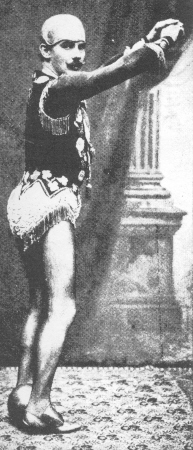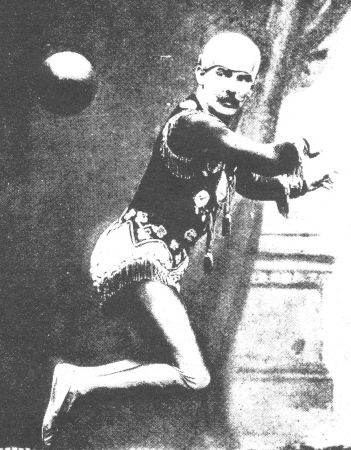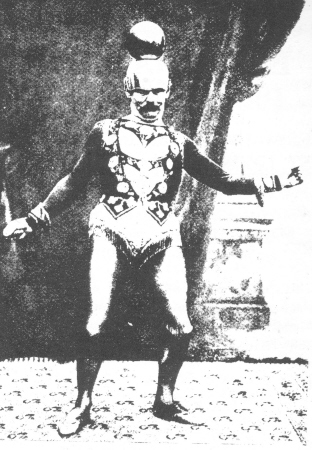|
HOW TO SUCCEED AS A JUGGLER
by
Paul Cinquevalli
(Reprinted
from Cassell's Magazine, Vol. 47, No.4, March, 1909)
From
time to time people have come to me and asked if I could show them how
to juggle. .. It looks so easy," they always say. Well, it is not
quite so easy as it looks, as may be judged from the fact that it took
me eight years to learn how to balance a couple of billiard balls on a
cue, and I have spent months, sometimes years, in learning how to
perform several other feats in my repertoire.
Of
course, some people can make hand and eye act together naturally with
far greater rapidity and accuracy than others. I gave a few lessons some
time ago to a young lady who knew absolutely nothing about juggling, and
yet at the very first lesson she learned to juggle five halls in the
air. I have never seen this done by any one at the first at,tempt,
and it greatly astonished me.
A
juggler must never feel the least doubt as to his ability to perform any
of his feats. If he does, it simply means that he has not properly
mastered it. For example, when I throw a 60-lb. cannon ball in the air
and catch it on the back of my neck as it comes down, I should be
instantly killed if I did not catch it in the right place. If I were an
eighth of an inch out in my reckoning I should be a dead man; but I feel
just as certain of catching the ball properly as I am that I can walk
downstairs without falling.
It
took me a good deal of practice to learn how to do this feat with the
cannon ball, but once learned it was never forgotten. The first time I
tried it I did it with a wooden ball weighing only I lb.
I
caught the ball in the wrong place and was knocked senseless. After
months of practice I learned how to catch it in the right place; then I
tried a ball weighing 17 lb., and a little while later I used a 60-lb.
ball.
The
first thing a juggler must do is to learn to work his limbs, especially
his hands and arms, with immense rapidity. To acquire such rapidity of
movement, it is necessary to go through various exercises every day, and
above all to see that each day one does the exercises a little more
rapidly than the day before.
Then
one must train the eye to act very rapidly. Try such a simple exercise
as juggling a couple of tennis balls, and you will probably find that
occasionally, easy as such an exercise is, you will drop a ball.
Why?
Simply because the eye does not act always with sufficient quickness to
enable you to catch the ball. The ball never waits, it will fall always
precisely at the same rate and in the same way. When your eye has become
trained to act with unvarying rapidity you will never miss catching the
ball. From juggling with two balls the learner can gradually pass
to juggling with five. When he can juggle with absolute certainty with
five balls he will have acquired a very fair facility with hand and eye,
and he may proceed to learn more difficult feats.
Perhaps
the hardest thing a juggler must
learn to do is to see things without looking at them. This may seem a
paradoxical statement, but it is, neverthe-less, true. For example,
when I am balancing a glass on straw on my forehead, and juggling five
hats at the same time I never look at the hats; if I did so for even the
hundredth part of a second the glass and straws would collapse, but I
know instinctively the position of the hats, and can catch them and
juggle with them just as easily as if I were actually looking at
them. But it takes years of
practice to acquire what I can only call this sort of double
sight.
Continual
practice is essential even for the most accomplished juggler. If I were
to take a month's holiday, and not to go through some feats during that
period, I should probably have to practice for a year before I could
perform in public again. As a matter of fact, I practice every day for
three hours at least.
There
is one point the modern juggler must recognise and understand, and that
is that he must amuse his audience as well as interest them. Of recent
years I have always introduced an element of humour into my performances
by doing things in a funny way, but it makes them much more difficult to
do.
|


